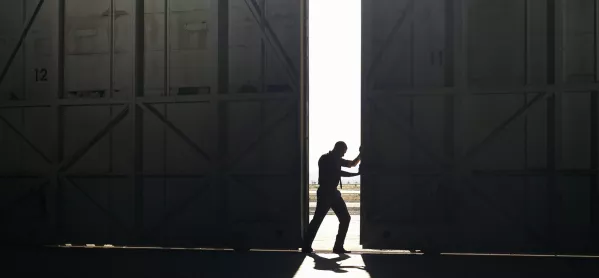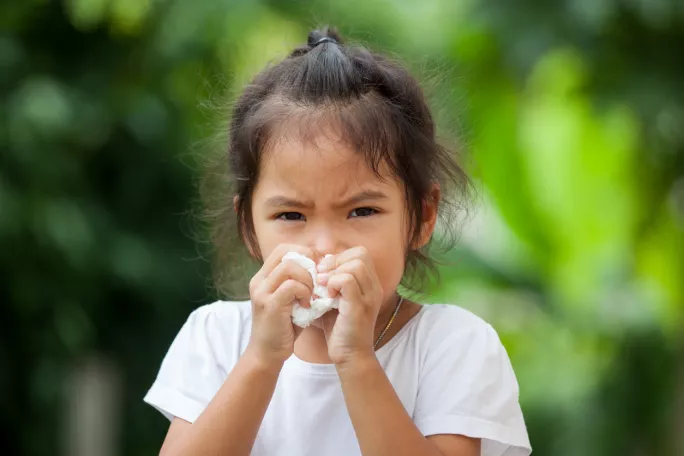- Home
- School reopening: is it safe to go back to school?
School reopening: is it safe to go back to school?

The Chief Medical Officers (CMOs) and Deputy Chief Medical Officers of England, Scotland, Northern Ireland and Wales have released a statement on the evidence around the role of schools in the transmission of coronavirus.
The document evaluates several areas that schools and those who work in them should be aware of during reopening.
Reopening schools: what does the CMOs’ statement say?
Below we have put the key points from the CMOs’ statement and provided additional information to put those points in context, including information from articles we have produced over the past few months.
- “It has not been possible to reduce societal inequalities through the provision of home-based education alone. School attendance is very important for children and young people.”
There have been many times in the past decade when the role of physical attendance at school has been questioned. Technology, it was argued, should free us from the mass education in classrooms that we have opted for since education began. Instead, personalised remote learning should be the way forwards.
The closure of schools highlighted that, currently, this vision just is not possible. Internet access, appropriate devices for school work and simply having the room and space to work in the home are clearly not in place for many children.
What’s more, remote working usually requires an adult to be in the home to assist with work and look after the child. That’s simply not possible in the majority of households.
Office of National Statistics (ONS) data suggests that 75.8 per cent of families with their youngest dependent child aged 5-16 have both parents in work or a lone parent in work.
ONS data also shows that 7 per cent of homes in the UK do not have internet connections - fixed or mobile. This means almost 2 million homes have no internet.
Shelter estimates 135,000 children in Britain are homeless, living in temporary accommodation such as hotels, B&Bs or hostels.
Charity Sustain estimates that for a third of children, the school dinner is their main meal of the day.
While the efforts at remote learning were Herculean in schools, these barriers are just too substantial to overcome. Professor Becky Francis, chief executive of the Education Endowment Foundation, told Tes: “We are projecting that the attainment gap will widen significantly, likely reversing the past decade’s progress.”
- “We are confident in the extensive evidence that there is an exceptionally small risk of children of primary or secondary school age dying from Covid-19. The infection fatality rate (proportion of those who are infected who die) for those aged 5 to 14 is estimated at 14 per million, lower than for most seasonal flu infections.”
This has been a consistent finding since the very earliest days of the pandemic. The reason why this is the case is, at present, unclear, though scientists have suggested a number of possible reasons, including the possibility that children’s immature immune response prevents the occurrence of the “cytokine storm” that causes damage in adults. But we have no consensus on this issue as yet.
- “We are confident that there is clear evidence of a very low rate of severe disease in children of primary and secondary school ages compared to adults, even if they catch Covid-19. The percentage of symptomatic cases requiring hospitalisation is estimated to be 0.1% for children aged 0 to 9 and 0.3% among those aged 10 to 19, compared to a hospitalisation rate of over 4% in the UK for the general population. Most of these children make a rapid recovery.”
Again, this has been consistent across the pandemic.
Media reports have suggested that Covid-19 has been linked to Kawasaki disease, an inflammatory multi-system syndrome affecting children. But the Royal College of Paediatrics and Child Health explains that the condition doctors have seen is actually Paediatric Multisystem Inflammatory Syndrome (PIMS).
It says: “Some of the symptoms of PIMS can overlap with other rare conditions, such as Kawasaki disease and Toxic Shock Syndrome. Some people have referred to the condition as ‘Kawasaki-like disease’. Like PIMS, complications from Kawasaki can cause damage to the heart. Kawasaki tends to affect children under 5, whereas PIMS seems to affect older children and teenagers.”
Read more
- School reopening: should teachers and pupils wear face masks?
- Coronavirus: the science of school closures
- Back to school: can we close the attainment gap?
It stresses these cases are incredibly rare - around 80 children are suspected of having had PIMS in the UK - and that it is treatable and the vast majority of children make a full recovery.
It also says the link to Covid-19 is not completely clear: “PIMS seems to be linked to Covid-19 because most of the children either had the virus or tested positive for antibodies indicating they had been infected (even if they hadn’t seemed ill at the time). But a very small number of the children with PIMS symptoms didn’t test positive for either.”
You can read more here
- “There is reasonable, but not yet conclusive, evidence that primary school-age children have a significantly lower rate of infection than adults (they are less likely to catch it). Evidence that older children and teenagers are at lower risk of catching COVID-19 is mixed. They are either less likely to catch COVID-19 than adults or have the same risk as adults.”
The question of how likely children are to catch Covid-19 is a tricky one: picking up asymptomatic cases is incredibly difficult for obvious reasons. However, the majority of scientific evidence, as the CMOs point out, suggests children are less likely to become infected and less likely to become ill if they are infected.
The Independent Sage group did suggest in June that children were as likely to be infected as adults, but this was challenged by the Full Fact organisation, which you can read here.
- “Transmission of Covid-19 to children in schools does occur. On current evidence, it is probably not a common route of transmission. It may be lower in primary age children than secondary age children.”
Again this issue is complicated by asymptomatic cases. The European Centre for Disease Prevention and Control (ECDC) states: “While very few significant outbreaks of Covid-19 in schools have been documented, they do occur, and may be difficult to detect due to the relative lack of symptoms in children.”
Coronavirus hygiene: the nine moments schools need to focus their cleaning efforts on
However, the ECDC agrees with the CMOs, stating that: “Investigations of cases identified in school settings suggest that child-to-child transmission in schools is uncommon and not the primary cause of SARS-CoV-2 infection in children whose onset of infection coincides with the period during which they are attending school, particularly in preschools and primary schools.”
These quotes are from its publication ’Covid-19 in children and the role of school settings in Covid-19 transmission’, published in August - which you can read here.
- “Data from the UK (Office for National Statistics (ONS)) suggest teachers are not at increased risk of dying from Covid-19 compared to the general working-age population. ONS data identifies teaching as a lower risk profession (no profession is zero risk). International data support this.”
The trouble with this statistic is that many staff were not in their place of work during the bulk of the pandemic lockdown period. However, because schools were among the last places of work to close, and because some school staff were still teaching in schools, it is an interesting finding nonetheless.
Plus, in places where schools did reopen more fully early on, such as in the Netherlands, there was not a corresponding link to severe health issues among teachers.
- “Transmission of Covid-19 to staff members in school does occur, and data from UK and international studies suggest it may largely be staff-to-staff (like other workplaces) rather than pupil-to-staff.”
There have been outbreaks of coronavirus in schools but these are often not directly linked to school attendance: ie, the source of infection was outside the school environment.
The ECDC publication states that “where Covid-19 in children was detected and contacts followed-up, no adult contacts in the school setting have been detected as SARS-CoV-2 positive during the follow-up period. The conclusion from these investigations is that children are not the primary drivers of SARS-CoV-2 transmission to adults in the school setting.”
It adds that transmission from adults to children is extremely rare. “While there is evidence of transmission from adults to children in household settings, there is little evidence of this occurring within the school setting,” it states.
And between adults? “Adults are not at higher risk of SARS-CoV-2 within the school setting than the risk in the community or household,” the ECDC states.
- “The international real-world evidence suggests that reopening of schools has usually not been followed by a surge of Covid-19 in a timescale that implies schools are the principal reason for the surge. There has, however, not been sufficient time to say this with confidence. On the other hand, a local or national surge in transmission in the community may lead to an increased risk of school outbreaks occurring.”
The impact of school reopenings on wider transmission in the community is incredibly difficult to ascertain. Tes did a huge investigation on the issue back in May and the conclusion was that we simply don’t know enough yet about how the school vector may impact the larger fight against coronavirus.
“Unfortunately, I don’t think we are any clearer on the role that children play in the community transmission of the virus - not enough of those studies have been done,” stated Jonathan Ball, professor of molecular virology at the University of Nottingham.
Meanwhile, Benjamin Cowling, professor and head of the University of Hong Kong’s Division of Epidemiology and Biostatistics, lead author on a paper looking at the impact of social distancing measures against coronavirus in Hong Kong, stated: “It’s very difficult to say whether school closures have been important, or whether it’s the other things that have been more important”.
You can read the full article here.

The problem for scientists and governments is that if children go back to school, then communities become more active: families cross paths on the way to school and at the school, and parents go back into work or to do other tasks within the community now they don’t have childcare commitments.
In short, the school itself may not be a crucial vector of transmission, but it may facilitate behaviours that do increase community transmission.
So do you tackle those behaviours or do you close schools to prevent those behaviours?
This is a choice the government will have to make when local flare-ups occur and is likely what the following passage of the CMOs’ message refers to: “It is possible that opening schools will provide enough upward pressure on R that it goes above 1 having previously been below it, at least in some local areas. This will require local action and could mean societal choices that weigh up the implications of imposing limitations on different parts of the community and the economy.”
Jon Severs is commissioning editor at Tes
Keep reading for just £1 per month
You've reached your limit of free articles this month. Subscribe for £1 per month for three months and get:
- Unlimited access to all Tes magazine content
- Exclusive subscriber-only stories
- Award-winning email newsletters



